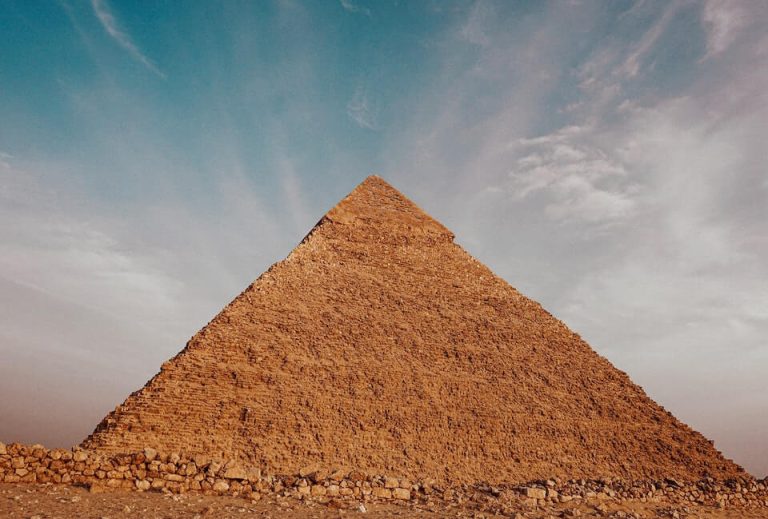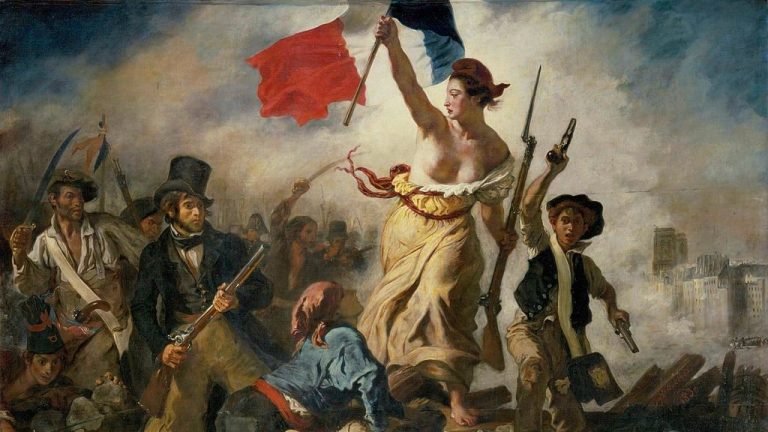22 Curiosities of Ancient Egypt that you did not know
Are you fascinated by the curiosities of Ancient Egypt as much as I am? Well, here you have 22 curious facts about Ancient Egypt that will surely surprise you.
Ancient Egypt or Ancient Egyptian Culture was an ancient civilization of eastern North Africa, concentrated along the lower reaches of the Nile River in what is now the modern state of Egypt.
After reading these facts about the ancient Egyptian culture you will understand why the ancient Egyptian culture generates so much curiosity. Although there are many important things about the history of Egypt, but we will focus on its curiosities and strange customs.
Here are 20 fun facts about ancient Egypt that you may not have known.
1. Many of the utensils we use were invented by the Egyptians.
Did you know that many of the household utensils we use were invented or used by the ancient Egyptians? Among them are the key and lock, combs, scissors, wigs, makeup, deodorants, toothbrushes and even toothpaste. Curious, right? These are more than just historical facts about Egypt, they are legacies that have endured over time.
2. Ordinary Egyptians naturally became mummies
Ordinary Egyptians were not mummified, but were buried in pits where the heat and dry desert conditions naturally mummified them.
3. The Great Pyramid of Giza is made up of 2,300 stone blocks.
The Great Pyramid of Giza, the only one of the Seven Wonders of the Ancient World that survived to this day, is made up of 2,300,000 individual stone blocks, each weighing about 2.5 tons.
4. Why did Egyptian women wear a cone on their heads? What did it mean?
Among the curiosities of ancient Egypt we find that in the paintings of the ancient Egyptian culture, women are seen with cones on their heads. Until recently it was believed that they were not used in real life, but were only a symbol. But in 2019, archaeologists found two royal cones buried some 3,300 years ago. So these ancient egyptian things were real.
The cones were found in two graves of working-class women. This detail demolishes a theory that explained the meaning of these cones. According to the theory, cones were simply a way for artists to give a certain special status to the wearer, much as halos are used to give someone a sacred meaning in Christian art.
What were those cones? One hypothesis said that the cones were scented lumps of ointment that melted in the sun. They served to perfume and cleanse the body, both physically and spiritually.
But in the tomb there is no chemical evidence that the cone had melted or the hair had that substance. Although the possibility that in the upper class that was really its use is not ruled out.
Some archaeologists think that the cones were a symbol of fertility, and that the woman was buried with the cone on her head to be fertile in the afterlife.
On the other hand, others think that these cones could only be hats. Actually, there is no way to know the truth. It is one of the greatest unsolved mysteries of Egypt.
5. Ancient Egyptians preferred dogs to cats.
Contrary to popular belief, dogs and not cats were the most common pet in Egypt. Cats were considered too special to be pets for normal people.
6. The Egyptians followed strange mourning traditions when their pets died.
Another curious fact about the Egyptian culture is that they loved their pets. But what happened when one died? There was great desolation among the inhabitants of the house due to the death of the pet. According to the Greek historian Herodotus of Halicarnassus, who visited Egypt in the mid-5th century BC, they plucked their eyebrows as a sign of grief when their cat died, and shaved their entire bodies, including their heads, if it was a dog that died. .
7. Ancient Egyptians mummified their pets and sometimes placed them in sarcophagi.
Since embalming was expensive, the fact that a pet was mummified indicated that it had been very special to its owner.
They were also buried in their own graves. An Egyptian is known to have placed the mummy of his most beloved animal inside his own sarcophagus. Dogs have also been found carefully mummified and curled up at the feet of their masters. It is possible that in life the pet slept at the feet of its owner, so the owner decided to stay that way until after his death.
8. Some work all their lives for a pyramid that would serve as a tomb

Some Egyptians had their pyramid built to use as a tomb. But there were times when, when the person died, a member of the family kept the pyramid, so he ordered the body to be buried elsewhere.
9. They saved for their future: a good grave, good mummification and a copy of the “book of the dead”.
Since they were born, they were saving and keeping part of the assets they had to pay for a good grave, a good mummification, and if they could afford it, a copy as extensive as possible of the “book of the dead” where a series of magical spells appeared that They tricked the gods into letting them pass.
10. The extensive book of the dead was part of the ancient Egyptian culture
The Book of the Dead was a fundamental work of the Egyptian empire.
What was the book of the dead? It was a kind of guide that helped the person to reach the other world, with spells that would help him on his way.
It was a very long text. Some specimens preserved in papyrus rolls reach forty meters .
It was also very expensive and only wealthy and high-ranking people could buy one. Though there were cheaper options for others who couldn’t afford a full one. But, for the Egyptians, the value of this text was incalculable, since its formulas allowed the deceased to reach the afterlife.
Many can now be found in museums in Egypt.
11. The ancient Egyptians invented a 365-day calendar, which served as the basis for the current calendar.
Among the important data of ancient Egypt is that we owe it the preparation of a 365-day calendar that survives until now, only modified twice; in the 1st century BC when the Julian Calendar was drawn up and in 1582 when the Gregorian Calendar (Gregory XIII) was established.
Well, now here are some curiosities of the pharaohs that perhaps you were completely unaware of.
12. At first they did not know how to mummify the pharaohs.
King Dyet, (circa 2927-2914 BC) was the fourth pharaoh of the First Dynasty. As at that time they had not perfected the art of mummification, the arms of his mummies fell off and that is why they placed branches to simulate the arms.
13. A pharaoh bathed his slaves in honey so that the flies would not bother him
King Pepy II (circa 2290-2196 BC) began his reign as a boy of about six years of age. During his rule there were slaves bathed in honey so that the flies would no longer bother him .
14. Sometimes onions were placed in the mummies’ eye sockets, as they represented life
King Ramses IV died in 1146 BC and apparently was the first mummy to have two onions placed in the eye sockets, as they considered it a symbol of eternal life. Some time later they changed them for false eyes made of glass.
15. The word mummy comes from mummia , a healing oil.
Mummia was a Persian oil derived from tar to which various healing properties were attributed. Some time later they used that word to describe the oil that was observed on the embalmed bodies of ancient Egypt, finally they called the whole body mummia (mummy).
16. Mummy powder came to be used in medicine, or to drink and eat
This is one of the strangest ancient Egyptian curiosities. They used the mummies for pharmaceutical remedies, such as diarrhea or polio. King Francis I of France (1494-1547) carried with him a little bag of mummy powder. That powder was mixed with honey, liquor or water. Others came to eat pieces of the embalmed corpse.
17. The French painter used mummy powder for his work “Liberty Leading the People” (1830).

By the year 1800 archaeologists had already unearthed many mummies, so people began to use them in other fields. For example, they ground up part of a mummy and used it as paint, the French painter Eugène Delacroix used it in his work “Liberty Leading the People” (1830). It was a common thing to do at that time.
18. They chewed mice to cure toothaches
They cured their toothaches by cutting a live mouse in half and before the body cooled down they put it in their mouths to chew on it.
19. To cure blindness they ground pig eyes with honey
They also used a cure for blindness, the remedy was to grind some pig’s eyes and mix them with honey. If that sounds weird, now think that the remedy was placed inside the patient’s ear.
20. The Egyptians shaved because they were infested with lice
Although it is known that they had treatments for this annoying pest, it may not have worked. That is why the men and women of ancient Egypt shaved. Instead the Egyptians wore wigs .
21. Did you know that the Egyptians believed that the yellow eyes of cats kept the power of the sun ?
The ancient Egyptians believed that cats, even black ones, stored the glow and energy of the setting sun in their eyes and stored it until the next morning. Interesting, don’t you think?
22. The curiosity to open ancient Egyptian sarcophagi
Whenever a tomb and sarcophagus is found, people are curious to know what they contain. For example, a few years ago, 59 2,500-year-old sarcophagi were found in the Saqqara necropolis in Giza. This was one of the greatest archaeological finds. You may also remember the case of the finding of a black sarcophagus , people feared some curse if they opened it or even that a deadly virus would be unleashed on Earth. That happened in 2018, the black sarcophagus was opened and no deadly virus spread to the world.
What do you think of these strange customs, data and curiosities of ancient Egypt?


